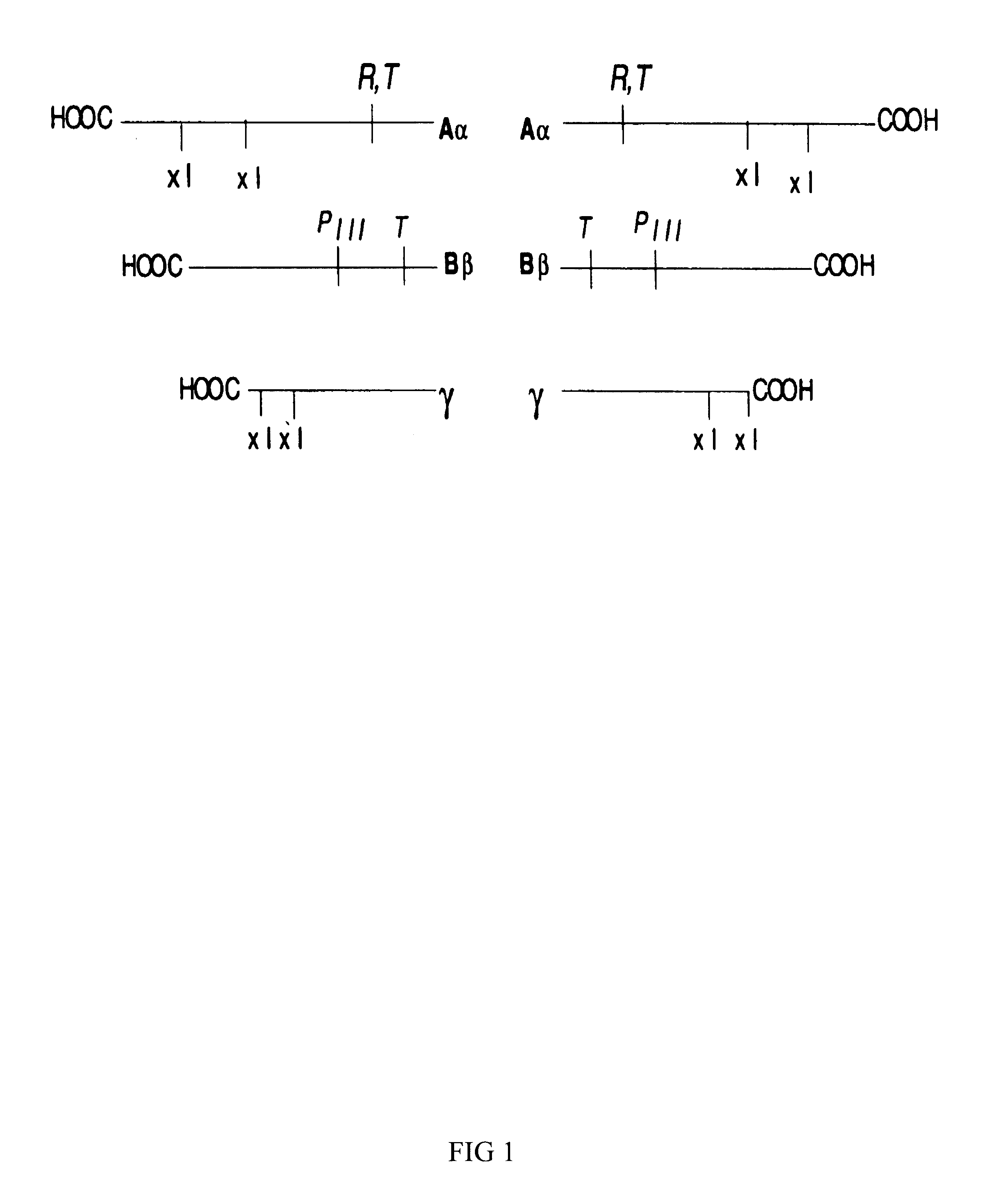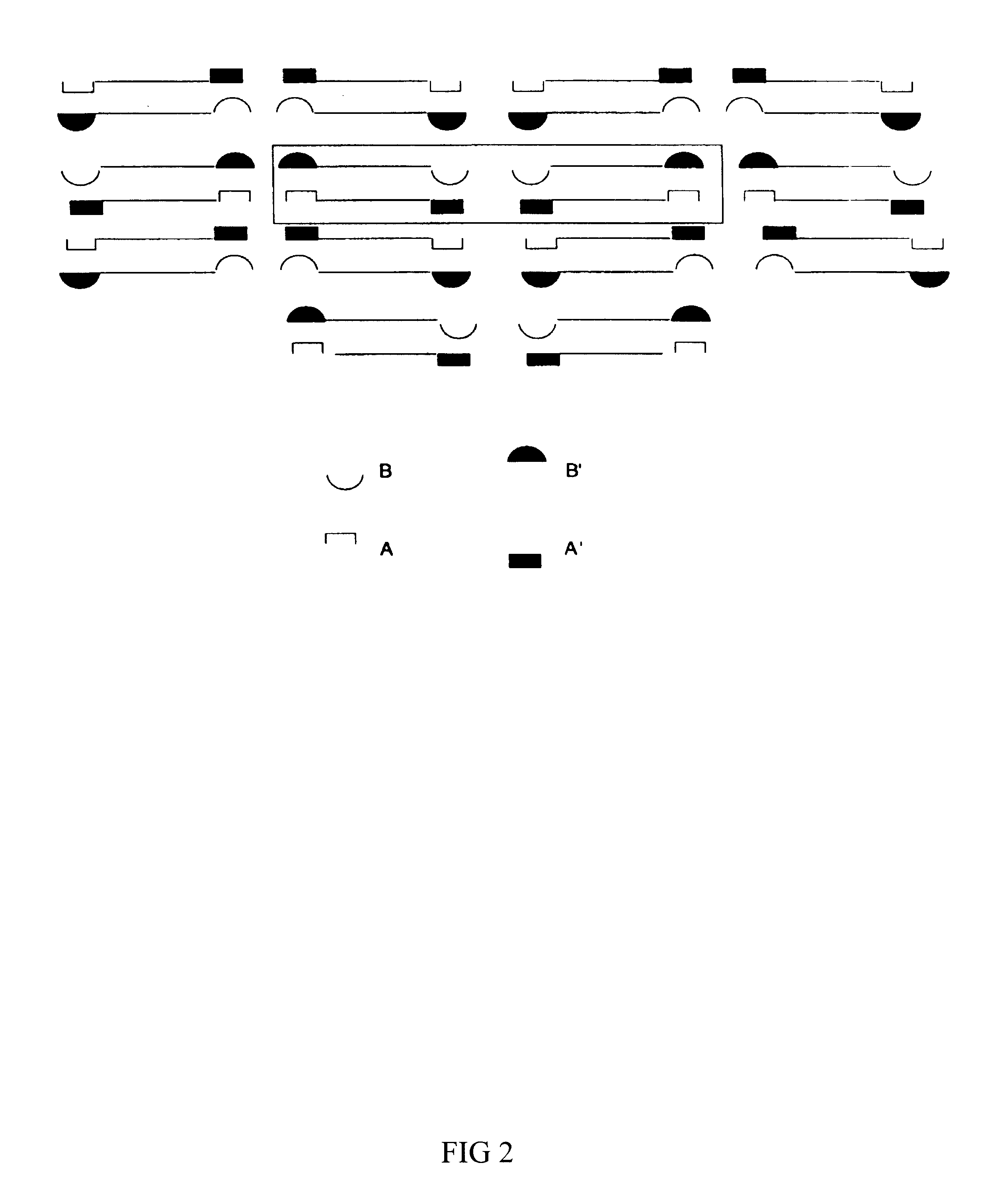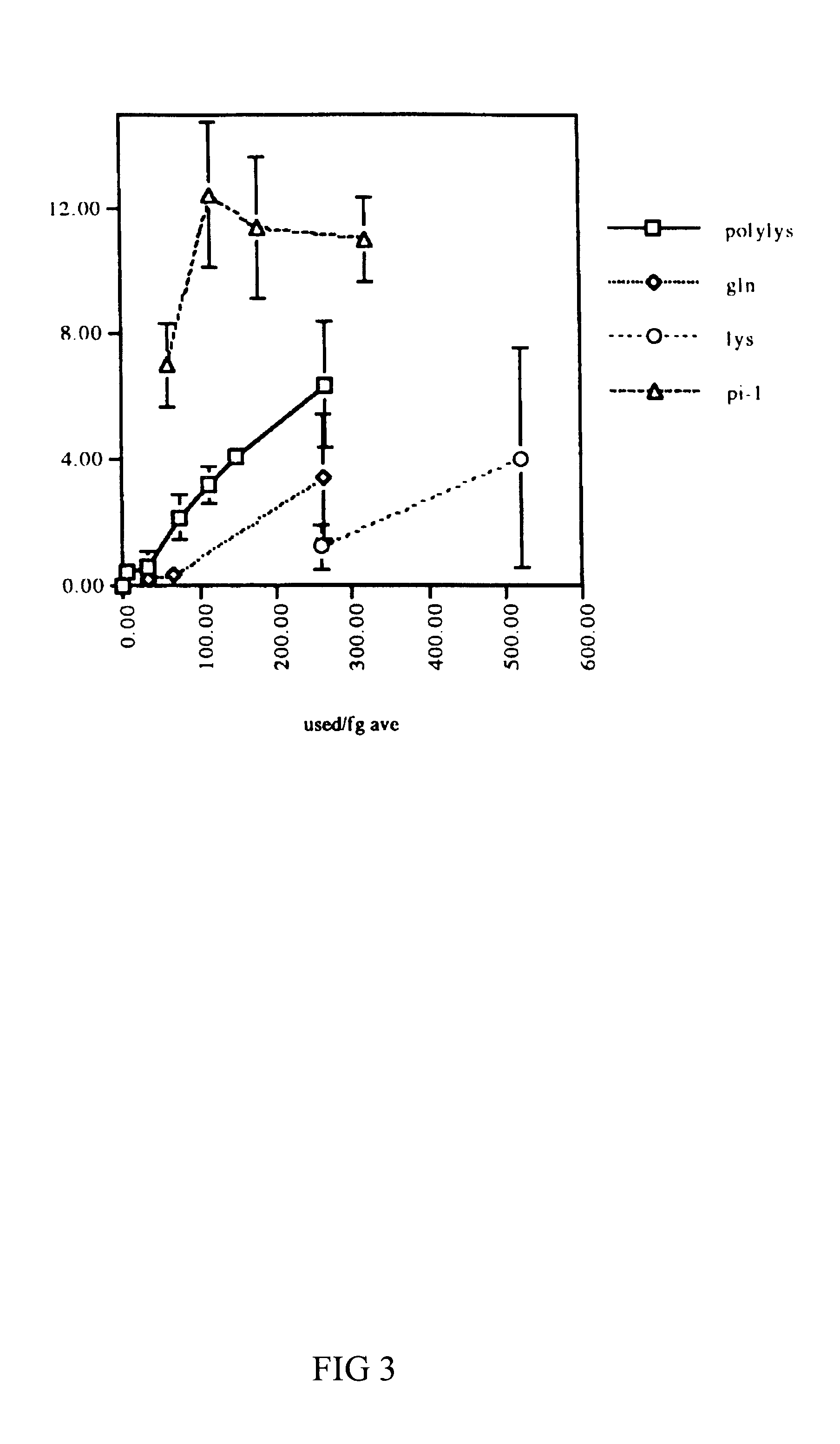Enzyme-mediated modification of fibrin for tissue engineering
a technology of fibrin and enzymes, applied in the field of enzyme-mediated modification of fibrin for tissue engineering, can solve the problems of poor stability of such a system, less work on covalently binding peptides, and less work on fibrin gels incorporating peptide sequences and other bioactive factors
- Summary
- Abstract
- Description
- Claims
- Application Information
AI Technical Summary
Problems solved by technology
Method used
Image
Examples
example 2
The present example is provided to demonsrate the utility of the present invention for providing the covalent attachment of a bioactive factor to a peptide matrix, the amount of the bioactive factor, such as a peptide, being quantitatively determinable.
Using the spectrofluorimetry method (second method) described above, the amount of peptide bound per molecule of fibrinogen was calculated for a series of peptide concentrations and for four separate peptide sequences. The sequences tested include two that mimic the crosslinking site in the .gamma. chain of fibrinogen, *YRGDTIGEGQQHHLGG (SEQ ID NO: 8) (* indicates the dansyl group and the section in italics is the native sequence of the crosslinking region of fibrinogen), a peptide with glutamine at the transglutaminase coupling site, and *LRGDGAKDV(SEQ ID NO: 9), a mimic of the lysine coupling site. Additionally a peptide with a polylysine at a random coupling site, *LRGDKKKKG (SEQ ID NO: 10), and a sequence that mimics the crosslink...
example 3
Bioactivity In Situ Ganglia Model
Bioactivity can be quantified using cell studies based on the 8-day chicken dorsal root ganglia model. With this model, addition of neuronally active sequences to the peptide can be tested for their ability in vitro to enhance neurite extension. Ganglia were dissected from eight day old chicken embryos and fibrin gels were polymerized around them. Peptide with different active sequences was crosslinked into these gels and the unbound peptide was washed out by periodically changing the neuronal media on top of the gels. These ganglia then extend neurites in three dimensions and the projection of these neurites can be captured using imaging software. This image can then be used to calculate the average neurite length. Three control experiments were done. Neurites were grown in fibrin gels without any peptide crosslinked, in fibrin gels with a nonactive peptide crosslinked in and in gels with active peptide crosslinked and soluble peptide present in the...
example 4
Nerve Regeneration and Scaffold
The present example demonstrates the utility of the present invention as a tissue regenerational supportive material. In addition, the data here demonstrates the utility of the invention for supporting the effective regeneration of nerve tissue.
A collection of peptides utilizing the crosslinking sequence from .alpha.2-plasmin inhibitor have been made using active peptide sequences from the basement membrane molecules laminin and collagen. Eight day chicken dorsal root ganglia were polymerized inside gels that had enough peptide to achieve the highest crosslinked concentration possible (8 moles peptide / mole fibrinogen). The extension of neurites from the ganglia was measured at 24 and 48 hours. the 48 hour data is shown in FIG. 5. The average neurite length for each experimental condition was normalized against growth in unmodified fibrin. Four of the active peptides used, IKVAV (SEQ ID NO: 4), RNIAEIIKDI (SEQ ID NO: 5), YIGSR (SEQ ID NO: 1) and RGD, de...
PUM
| Property | Measurement | Unit |
|---|---|---|
| concentrations | aaaaa | aaaaa |
| wavelength | aaaaa | aaaaa |
| bioactive | aaaaa | aaaaa |
Abstract
Description
Claims
Application Information
 Login to View More
Login to View More - R&D
- Intellectual Property
- Life Sciences
- Materials
- Tech Scout
- Unparalleled Data Quality
- Higher Quality Content
- 60% Fewer Hallucinations
Browse by: Latest US Patents, China's latest patents, Technical Efficacy Thesaurus, Application Domain, Technology Topic, Popular Technical Reports.
© 2025 PatSnap. All rights reserved.Legal|Privacy policy|Modern Slavery Act Transparency Statement|Sitemap|About US| Contact US: help@patsnap.com



